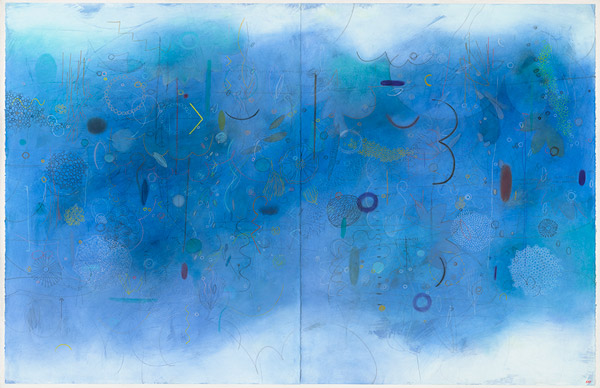Audio Stop 732

mixed media on paper on canvas, National Gallery of Art, Washington, William A. Clark Fund © Emmi Whitehorse
Emmi Whitehorse (Diné)
Fog Bank, 2020
Read full audio transcript
EMMI WHITEHORSE:
My name is Emmi Whitehorse. I am from New Mexico, and I am a painter – have always painted, my whole life.
NARRATOR:
In her work, Whitehorse creates expansive spaces for us to inhabit and share. Her environments reflect the Diné philosophy of hózhó, which stresses beauty, harmony, and balance. They’re also laden with evocative motifs and traces of the natural world.
EW:
It’s a world that I’m trying to create that I want people to go into and just see all this calmness, the light, the color that you see as the day progresses.
I want people to see that this is something that is coming really from nature, from the land, from my experience with being outside. I want people to see every little thing that gets disturbed. As you're walking, you might see little twigs that had blown onto your path, things moved around by wind, you know, water, all the tracks that animals leave behind…
You have to look at it a long time, and you’ll start seeing all the little markings all of a sudden start making their appearances.
NARRATOR:
These markings are suspended within a thick wash of color. Whitehorse builds up this base layer by rubbing pigment directly into the paper with her hands. Her tactile technique is inspired by her grandmother, who worked on the land as a sheepherder.
EW:
She had to work with raw materials from the get-go, you know, the sheep, the wool, the cutting, shearing, dyeing, combing, cleaning the wool, and then finally spinning it and then finally using it in making a blanket. And so to me it’s kind of the same thing that I’m doing. You know, I’m using chalk. I’m building up something from all these raw materials to something that is a finished idea, a finished painting or finished piece of work.